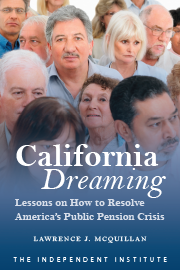Thousands for lawyers and therapists, not a penny left for victims of crime.
That, it seems, could be the motto of the California Victim Compensation Program, which is bankrupt after spending its reserve fund of $96.7 million over the last four years. By June 2004, the program will be $80 million in the red.
Created in 1965, the program was designed to provide financial assistance to victims of crime and members of their families for expenses ranging from mental health treatment to funeral services. It is funded by state and federal fines imposed on convicted criminals.
According to its board, applications increased 50% and payments 45% beginning in 1999. Program officials attribute these sharp increases to their success in simplifying the application process and to the passage of state legislation in 2000 increasing the maximum award per victim to $70,000 from $46,000. Annual program revenues, however, did not keep pace with payments, having increased only 8% since 1999.
Although the board hails the rise in victim applications and payments as “remarkable,” it fails to take responsibility for the financial missteps that created today’s deficit.
The board boasts that it reduced the backlog of claims over the last four years, but it did this by not verifying claims properly. According to a local program manager who spoke with us, board officials in Sacramento issued a directive that “processing and verification rules” be suspended to clear the backlog. As a result, this manager said, the program paid “junk claims” to undeserving applicants.
The program also gave money to lawyers who provided minimal services, authorized more mental health treatments at higher benefit limits than other states and gave money to ineligible members of victims’ families.
The program could have saved millions of dollars to help genuine victims if it had put in place sooner the policies that the board now recommends, such as limiting awards to $70,000 per crime, not just per victim, which would have saved $400,000 in 2001 alone.
The board also notes, “While other states pay an average of 6% of their total payments for mental health services, California pays 40% of its total payments for mental health treatment.” If mental health benefits were in line with other states, the program could save $18 million in the fiscal year that starts in July. Also, allegations have surfaced that therapists billed the program for services never rendered.
The board confirms that attorneys were rewarded generously “irrespective of the level or amount of legal services provided to the victim.”
In many instances, attorneys were awarded 10% for simply filing an application—even if no other legal services were rendered. If attorneys’ compensation were tied to services rendered, annual savings could total $696,000.
Last July, when the shortfall became apparent, the board decided to create a “revenue recovery project team” to collect money from state and federal sources owed to the program. Why wasn’t this money collected all along?
The California Victim Compensation Program is not, as it claims, a victim of its own success. Rather, it has become a pork barrel for government workers, therapists and lawyers.
Through bad management and reckless spending, program officials have allowed innocents to be victimized twice over, yet no board member or program official has been dismissed. Victims deserve better.









